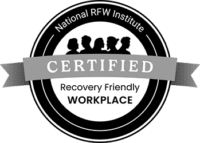Patient Centered Care – The Last Mile
The biggest miss I am seeing in healthcare today revolves around the misconception that patients are doing the things they need to do when they are at home, assumed to be following a protocol directed by their healthcare provider. In staggering numbers patients are not, and the blame does not primarily lie with them. Whether the patient is discharged from an inpatient healthcare setting (hospital, rehabilitation, doctor’s office etc…) or navigating through a medical issue (diabetes, asthma, chronic pain, behavioral health, etc…), the assumption is that they are doing the things they need to do to appropriately manage their health, but this is far from the reality. Health care is slowly starting to reach out to their patients/members, including utilization of more remote technologies for transition of care — but this has been a detrimentally slow process. There needs to be a greater sense of urgency and a quicker pace to adaptation of remote care management technologies that allow a patient to have more impact on their outcomes, guided by their medical provider, health care facility and/or pharmaceutical company.
“The negative implications of non-compliance are huge, resulting in poor health and astronomical costs to the healthcare system.”
The negative implications of non-compliance are huge, resulting in poor health and astronomical costs to the healthcare system. The cause has little to do with the unempowered patient, and more to do with the healthcare ecosystem. Between hospitals, health plans and pharmaceutical companies, the big miss is the last mile where the patient is not in the direct purview of the provider. Fortunately, the focus is switching to patient-centered care. The healthcare ecosystem is starting to realize that not only for the benefit of the patient’s health, but to control skyrocketing costs, there needs to be a revolutionary look and understanding of how and what it will take to help the patient manage their healthcare in their when they are on their own, living their daily lives, and in that last mile. Revolutionary technological advancements from simple ones to more complex are allowing Health Care to better connect and help manage their patient/member remotely. Coupled with a understanding of how, what, when, where and why Humans interact with the emerging technology has proven to result in Cost Savings, better profits and better health outcomes.
Revolutionary technological advancements from simple ones to more complex are allowing Health Care to better connect and help manage their patient/member remotely.
Today there needs to be a greater emphasis not just on the technological solutions available to patients to support their healthcare management, but on how the patient acclimates to and uses that technology. One solution on the rise is GoMo Health’s BehavioralRx™ The Science of Population Health, a system that understands the pathway of human to technical behavior to increase compliance with remote care management. This concept considers that in today’s hectic lifestyle, people are constantly on the go, busy, and stressed, and in order to achieve compliance and adherence we need to better understand people’s behavioral triggers. What is it that motivates or inspires a person to take an immediate action? Reciprocate? Change a habit? Take a pill? Use a home medical device? And become open to following advice of a healthcare professional?
The most dangerous time in the care cycle might be following inpatient treatment when patients are (discharged and) home. Statistics show one-fifth of Medicare and Medicaid beneficiaries are being readmitted within 30 days and the cost are exceeding $26 billion annually. It’s time to focus on the last mile.
Source: New York Times







Find Us Online